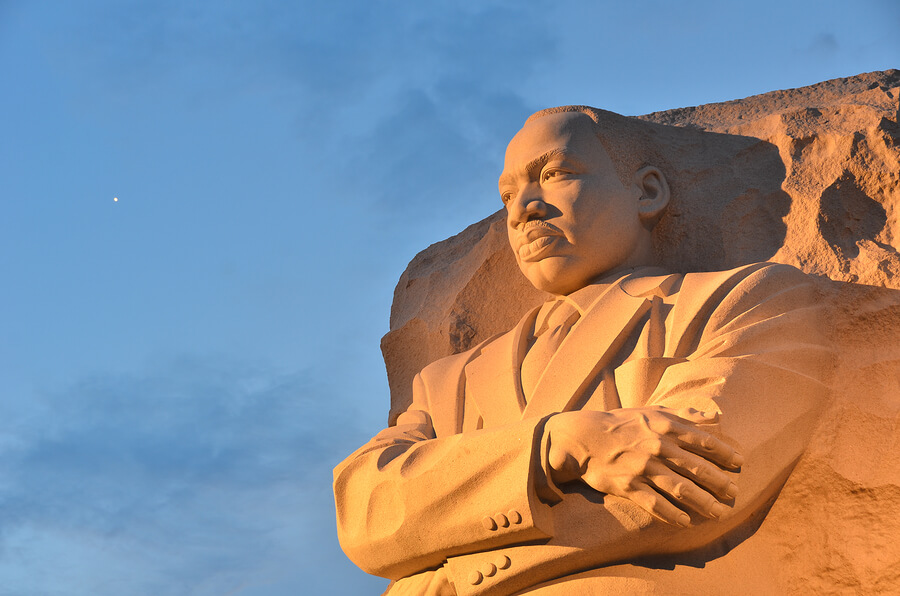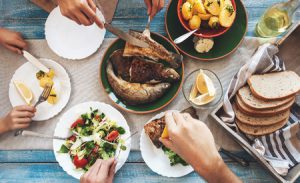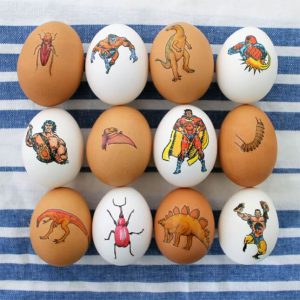

Fact: Martin Luther King Jr. is most remembered for leading the African American Civil Rights Movement in the 1950s and ’60s to end segregation (the separation of black people from white people in schools, restaurants, and other public places in the U.S.). He fought for equal rights and fair treatment for people of all races or skin colors.
What kids can do: Treat all people the way you want to be treated — with kindness and fairness. Think about how we all are different from each other in some ways, but we are the same in so many ways: Inside we all have feelings and deserve to be happy.

Fact: Growing up the son of a minister, and later becoming a minister himself, Martin Luther King Jr. was deeply religious. But he also embodied faith in the general, spiritual sense. He believed in making bold goals, even when he wasn’t sure where to begin or how things would end.
What kids can do: Believe in yourself and your goals and dreams. Don’t give up or let worry take over when something gets difficult.

Fact: In 1959, Martin Luther King Jr. traveled to India and learned a lot about Mahatma Gandhi, a man who led nonviolent protests to help people in India gain freedom from British rule. King believed nonviolence — avoiding the use of weapons and physical fighting — was the best way to work toward equality in the U.S. Because of this, he won the Nobel Peace Prize in 1964.
What you can do: Solve conflicts peacefully, without ever hitting or hurting someone. When you feel angry or upset, express your feelings in words and talk about what you need to make things better.

Fact: Martin Luther King Jr. was a bright student who skipped two grades and started college at age 15. He went on to earn two bachelors degrees and a PhD. His strong education and love of reading helped him write many powerful sermons and speeches, including his famous “I Have a Dream” speech.
What kids can do: Work hard in school, and find subjects you are passionate about. Find books that interest you to make reading a part of your life.

Fact: Martin Luther King Jr. often spoke about love and brotherhood, encouraging people to think of others — including “enemies” — like family. He believed love, rather than violence and hatred, is the answer to the world’s problems.
What kids can do: When someone treats you poorly, try to treat them well in return. Use your energy to love yourself and help others.

Fact: Simple acts often transform people into important leaders. In 1955, a black woman named Rosa Parks was arrested for refusing to give up her seat to a white man when the “whites only” section of the public bus was full. That sparked Martin Luther King Jr. to lead the Montgomery Bus Boycott — a 13-month protest that helped end segregation on the city’s buses and fueled the U.S. Civil Rights Movement.
What kids can do: Be a leader in a club, on a sports team, or in the classroom. Feel confident in yourself, show good sportsmanship, and help your peers work out conflicts.

Fact: Martin Luther King Jr. became a minister because he said he felt an “inner urge” calling him to “serve humanity.” He knew that becoming a civil rights leader would be dangerous, but he cared more about helping others than protecting himself.
What kids can do: Volunteer to help a charity. Invite friends and relatives to come and volunteer with you.

Fact: Martin Luther King Jr. was jailed a few times for leading nonviolent protests and boycotts, and his home was bombed multiple times, but he kept moving forward. He wasn’t sure if he would see the end of segregation in his lifetime, but he still shared his hopes with the world. He was 35 years old when the U.S. passed the Civil Rights Act of 1964, outlawing segregation.
What kids can do: Think of others throughout history who endured hard times. Even if challenges slow you down, don’t give up.





